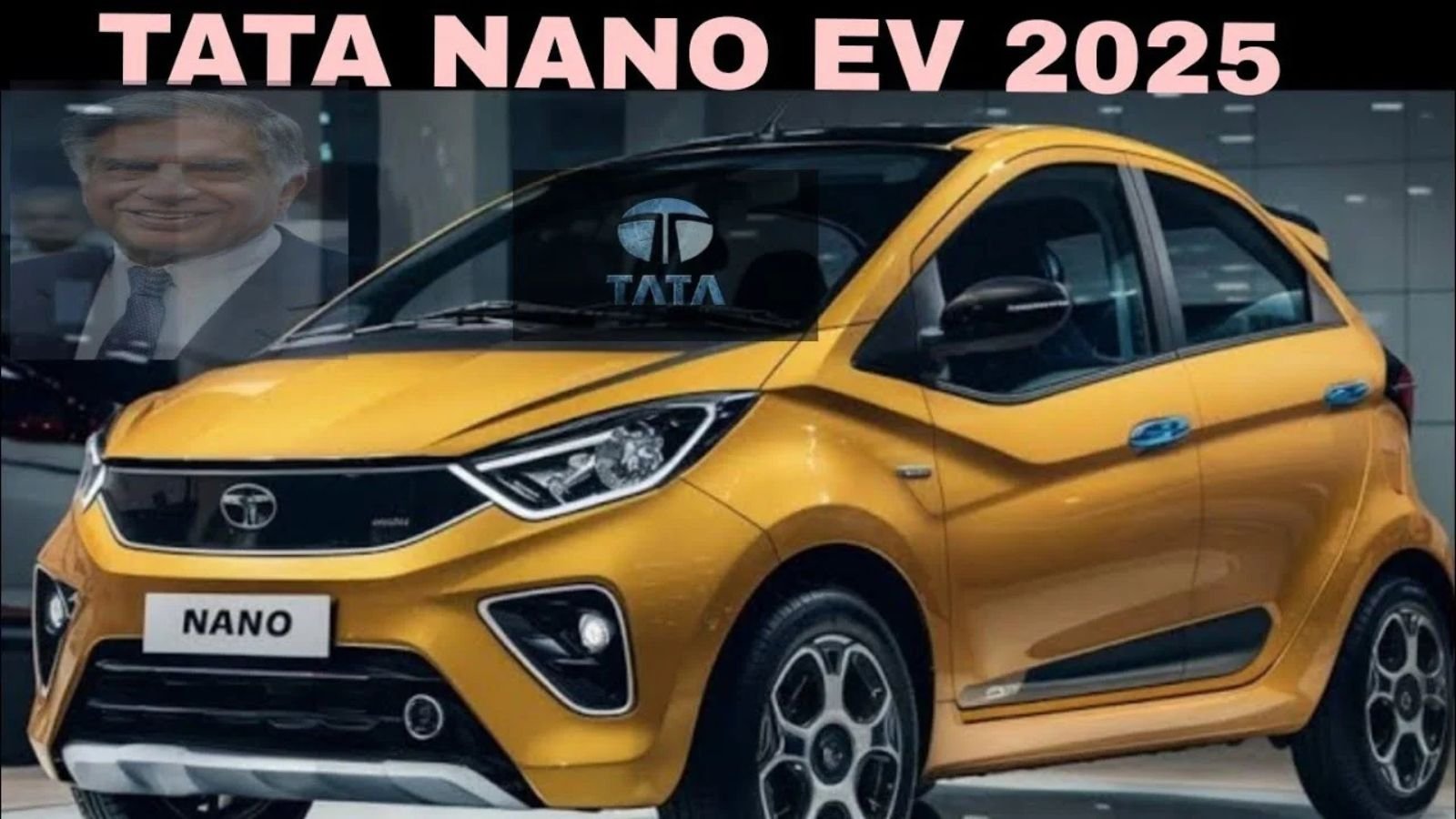If you remember the Tata Nano—a compact, budget-friendly car that once made waves for being India’s most affordable vehicle—you’ll find the Tata Nano EV a fascinating evolution. Designed as an environmentally-conscious alternative to the original petrol-powered Nano, the Tata Nano EV was Tata Motors’ experimental attempt at turning the dream of accessible electric mobility into reality. Though it never officially launched for mass consumption, the concept captured attention for its promise of affordability, efficiency, and practicality, particularly in India’s congested urban landscapes.
Tata Nano EV: Key Highlights
| Feature | Details |
|---|---|
| Motor | Electric (Expected) |
| Range | 100–150 km (Estimated) |
| Charging Time | 6–8 hours (Standard Home Socket) |
| Seating Capacity | 4 Passengers |
| Top Speed | 80–90 km/h (Ideal for Urban Commutes) |
| Expected Price | ₹5–7 lakh (Never Officially Launched) |
| Best For | City Driving, First-Time EV Users |
The Tata Nano EV was designed with a singular vision—to bring electric mobility to the masses. At a time when electric vehicles were seen as luxury items, this concept aimed to redefine perceptions. It took the simplicity of the original Nano and married it with a clean, green electric heart.
Tata Nano EV: Why It Captured Everyone’s Attention
So, what made the Tata Nano EV so special? For starters, it embodied simplicity, much like its predecessor. The goal was not just to electrify transportation but to make electric vehicles accessible and affordable. In a country where two-wheelers dominate city commutes due to cost constraints, the Tata Nano EV presented an opportunity to provide the comfort and safety of a car at the cost of a premium scooter.
The Nano EV’s compact dimensions made it a dream for urban commuting. Navigating through tight lanes, narrow parking spaces, and bumper-to-bumper traffic would have been incredibly easy. Add the benefits of silent operation and zero tailpipe emissions, and you get a car perfectly suited to the demands of daily city life.
Tata Nano EV: Expected Powertrain and Performance
While exact specifications were never officially confirmed, early reports suggested the Tata Nano EV would have come equipped with a small-capacity electric motor and lithium-ion battery. The anticipated range of 100 to 150 kilometers per charge was more than adequate for daily errands, office commutes, and school drops.
Charging was expected to be user-friendly. The idea was to allow owners to plug the vehicle into a regular home socket, needing 6–8 hours for a full charge. Although it lacked fast-charging capabilities, it wasn’t a major drawback given the intended use-case. The Tata Nano EV was never meant for highways or long-distance travel—it was tailored exclusively for the city.
Performance-wise, the car’s top speed of 80–90 km/h was decent for urban roads, and acceleration would have been smooth and linear thanks to the nature of electric drivetrains.
Tata Nano EV: Interior and Practicality
Inside, the Tata Nano EV would likely have kept things minimalistic, echoing the original Nano’s budget-focused design. While creature comforts like a touchscreen, automatic climate control, or plush interiors were not expected, basic functionality was well covered.
Despite its tiny footprint, the Nano EV was anticipated to seat four adults—two in the front and two in the rear—making it a practical family car for city usage. The compact size didn’t compromise usability. In fact, this very aspect made it a prime contender in the entry-level EV segment. Also, the electric powertrain would have freed up more space under the hood, potentially improving storage and legroom compared to the internal combustion engine version.
Tata Nano EV: The Perfect Fit for Indian Cities
India’s urban centers are becoming increasingly congested, and parking space is at a premium. In such an environment, the Tata Nano EV would have been an absolute blessing. At just over 3 meters in length, it would have easily navigated tight alleys, zipped through traffic snarls, and parked in the smallest of spots.
Moreover, with rising fuel prices and growing awareness of pollution, Indian consumers are gradually showing interest in electric mobility. The Tata Nano EV, with its low running costs and minimal maintenance, could have addressed the needs of students, young professionals, and small families looking for a reliable and economical mode of transport.
Running Costs and Maintenance: A Big Advantage
One of the biggest selling points of any electric vehicle is the low running cost, and the Tata Nano EV would have excelled here. EVs have fewer moving parts compared to traditional petrol or diesel vehicles. That means less wear and tear, fewer maintenance issues, and significantly lower expenses in the long run.
Charging the car at home using a regular socket would have cost just a few rupees per day, especially compared to daily fuel refills. Over the course of a year, owners could potentially save thousands in fuel expenses alone.
Safety in the Tata Nano EV: A Mixed Bag
Safety was never the strong suit of the original Nano, and the same would have applied to the Tata Nano EV. While it might have included basic safety features like seatbelts, ABS, or airbags in top trims, it was unlikely to match the safety benchmarks set by more expensive EVs like the Nexon EV.
However, considering it was designed for low-speed city use, its target buyers were likely to accept the trade-off between cost and safety, especially if the vehicle was to be used primarily for short, predictable commutes.
Why the Tata Nano EV Was Never Launched
Despite the buzz and potential, the Tata Nano EV never made it to mass production. Several factors contributed to this decision:
- Battery Technology Costs: At the time, lithium-ion batteries were still expensive, which would have driven the car’s cost higher than expected.
- Limited Charging Infrastructure: India’s charging network was in its infancy, making mass EV adoption difficult.
- Market Readiness: Consumers were still skeptical about electric vehicles and their capabilities.
- Nano’s Brand Image: The Tata Nano, despite its innovation, failed to meet sales expectations. This reputation possibly impacted the perception of the Nano EV as well.
What the Tata Nano EV Taught Tata Motors
Even though the Tata Nano EV never hit the roads, it played a pivotal role in shaping Tata Motors’ electric journey. The learnings from its development likely influenced the creation of more successful models like the Tata Nexon EV, Tigor EV, and the upcoming Curvv EV. These newer models come with better safety, enhanced technology, and significantly improved range—proving that Tata has come a long way in its EV roadmap.
Could the Tata Nano EV Make a Comeback?
There is a strong possibility that Tata Motors could revive the idea of the Tata Nano EV in the near future. With advancements in battery technology, dropping costs, and the government’s push for EV adoption, the time may finally be ripe for a small, ultra-affordable electric city car.
Tata could take inspiration from global mini EVs like the Wuling Hongguang Mini EV in China, which has seen massive success due to its affordability and urban practicality. A rebranded, re-engineered Nano EV with improved safety, better range, and modern features could definitely carve a niche in India’s burgeoning EV segment.
Frequently Asked Questions About the Tata Nano EV
Q1: Was the Tata Nano EV ever launched in India?
No, it was introduced as a concept but never launched commercially.
Q2: What would the expected price of the Tata Nano EV have been?
Experts estimated it to be between ₹5–7 lakh, which would have made it the most affordable EV in India at the time.
Q3: What range would the Tata Nano EV offer?
It was expected to offer a range of 100 to 150 kilometers on a full charge, suitable for daily urban use.
Q4: Is there a chance it could still launch in the future?
Given the current interest in small EVs and Tata’s growing EV line-up, a relaunch with modern improvements is a real possibility.
Q5: How did the Tata Nano EV influence Tata’s EV future?
Though it wasn’t launched, the development process contributed significantly to Tata’s experience in electric vehicle engineering, paving the way for successful models like the Nexon EV.
Final Verdict: A Missed Opportunity with Future Potential
The Tata Nano EV was an ambitious and forward-thinking project that aligned perfectly with India’s urban commuting needs. Though it remained a concept, it left a mark by highlighting the importance of affordable electric mobility. If it were launched today with updated specs and better safety features, it could still revolutionize the entry-level EV segment.
Tata Motors has already demonstrated its prowess in the electric space, and perhaps one day, the Tata Nano EV will return—not just as an experiment, but as a mass-market reality that fulfills the promise of clean, accessible transportation for all.
Some Important Link
| Telegram Group | Click Here |
| WhatsApp Group | Click Here |
| Home Page | Click Here |














